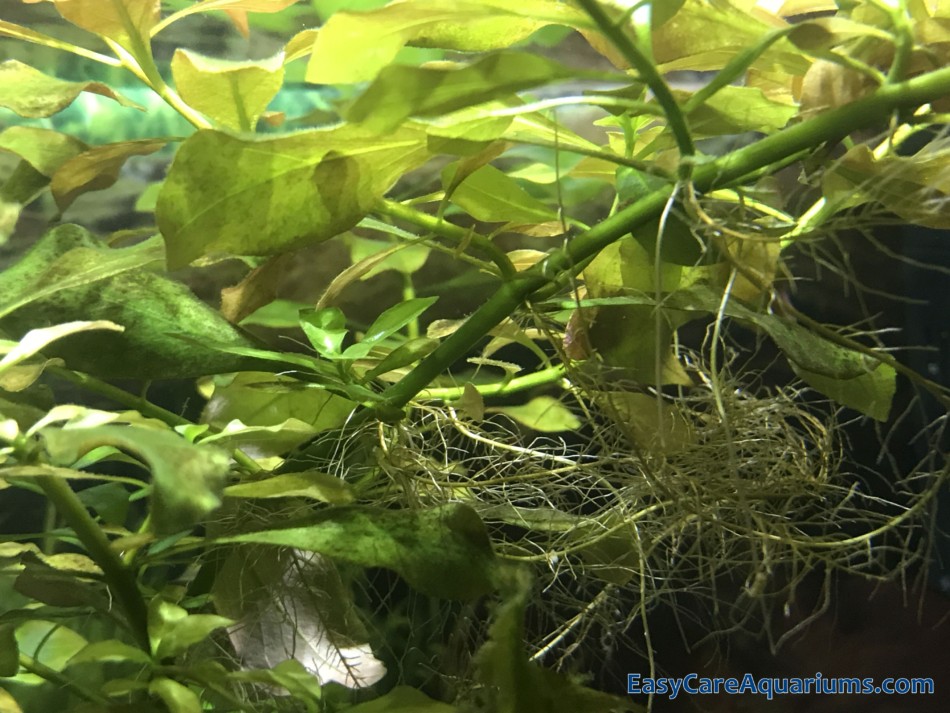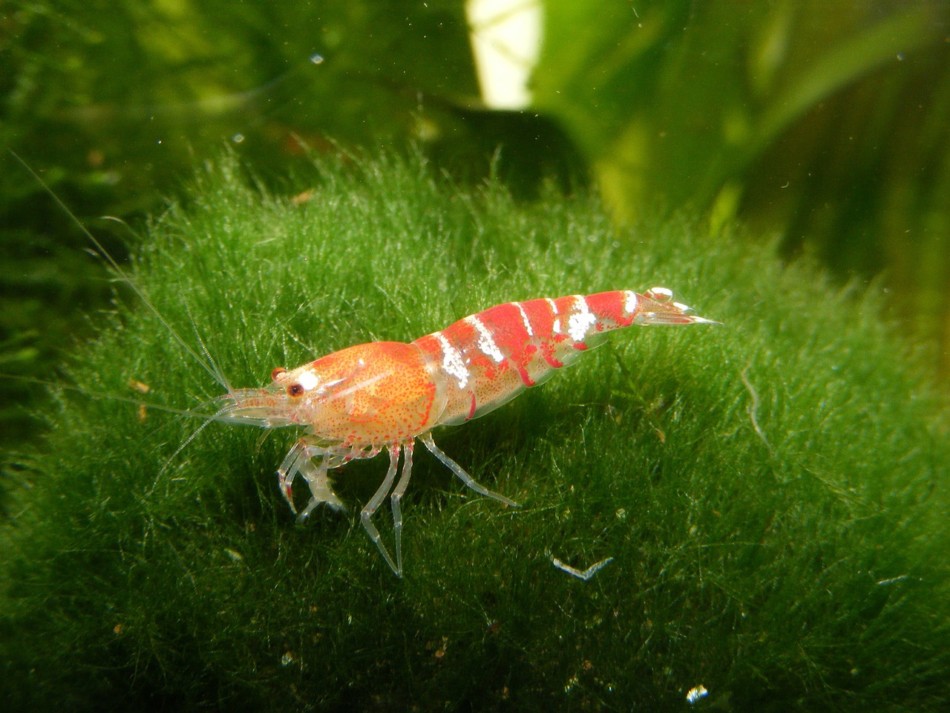This article may contain some affiliate links to products. The links provide me a small percentage of commission but do not cost you anything extra to use. (See full disclosure statement here ).
).
Losing large numbers of your shrimp colony on a regular basis is frustrating. But with a little testing, checking, and a few small changes, you stand a good chance of rebuilding your colony. And it doesn’t matter whether you’re new to shrimp keeping or someone who’s been keeping shrimp or some time.
There can be many reasons why your shrimp are dying. These include problems with:
- Acclimation
- Tank Conditions & Environment
- Filtration, Oxygenation & Flow
- Tank Maintenance
- Tankmates
- Stress
- Diet & Feeding Routines
- Shrimp Health & Genetics
- Medications, Pests & Infections
- Shrimp Age
Most of the categories on the list above cover several points within that category.
So keep reading for some helpful information and tips
Acclimation
Acclimation in the shrimp and/or fishkeeping hobby means slowly introducing your new livestock to the tank conditions that they will be living in. Shrimp don’t do well with abrupt changes in water parameters or temperature. Improper acclimation causes a lot of deaths so you need to take things slowly when introducing your shrimp to their new home.
There are a couple of different ways to acclimate shrimp.
The slowest, but probably the best way, is to drip acclimate them. This involves slowly dripping your own tank water into the bag of shrimp that you’ve bought. It can take several hours depending on the rate of water being dripped into the bag. The water is dripped slowly through air line tubing. With either a knot in the tubing or a valve to control the flow. This method also helps the shrimp to adjust to any temperature change too. When there is more of your tank water in the bag than the original water you can net and move your shrimp into your tank.
Another way to acclimate your new shrimp is a bit more basic. But if you take your time it can be effective. This method involves floating the bag of shrimp in your tank for about 10 minutes to help with temperature acclimation. Then you add small amounts of your tank water to the bag at regular intervals of about 10 minutes or so. You need to do this several times until you think that most of the water in the bag is your own tank water. Then you can net and add the shrimp to your tank.
Note: If you don’t already have any shrimp/fish/snails in the tank you won’t have to net the shrimp. You can just ‘pour’ them into the tank with the water that you’ve acclimated them to.
If you would like to see how drip acclimation works, and how to do it, the YouTube video link below is helpful. The video is by Mark from Mark’s Shrimp Tanks and clearly shows how drip acclimation is done.
Tank Conditions & Environment
Problems with the general tank conditions and tank environment can lead to your shrimp dying. There are several aspects involved in this so I’ve broken them down into sections below. They’re not listed in a particular order because they’re all equally important. So it’s worth checking on them all if your shrimp keep dying and you’re not sure why.
Tank Maturity
Shrimp have a better chance of survival if they are kept in a mature cycled tank. The reason for this is that over time a tank develops a balanced and healthy environment for shrimp. And also for fish, snails and other aquatic creatures too.
A mature tank naturally builds up biofilm and algae which provide a food source for your shrimp. These are particularly important for baby shrimp (shrimplets) to feed on before they are big enough to eat the other foods that you feed to your older shrimp.
Also a mature tank has developed the beneficial bacteria that helps to keep the tank a balanced and healthy environment for it’s inhabitants.
However, if you are adding your shrimp to a new tank you can give the tank a boost by using aquarium products such as API Quick Start (Amazon link) to get the tank cycle off to a good start. These products contain Nitrifying Bacteria that speed up the production of a healthy tank environment. There are other brands of similar products available such as Fritz Aquatics FritzZyme 7 (Amazon link) and a few others too.
(Amazon link) and a few others too.
Tank Temperature
Some types of shrimp prefer warmer water and others do better in cooler temperatures. For example, Caridina shrimp such as Crystal Reds like their water to be on the warmer side. Neocaridina shrimp like Cherry shrimp prefer things to be a little cooler. So make sure that you keep the tank water at the correct temperature for your chosen shrimp. Because if your shrimp aren’t happy with the water temperature they are unlikely to do well.
Water Parameters/Water Quality
The type of water parameters needed for shrimp to thrive in can vary between shrimp species. Some shrimp prefer soft water and some hard water. You need to know which water your shrimp will need. However, all shrimp are sensitive to the levels of Nitrate, Nitrite and Ammonia. With high levels of the last two in particular being deadly for shrimp and other aquarium inhabitants.
So if you keep losing your shrimp it’s worth testing the water regularly.
You can test your tank water by using a Water Testing Kit (Amazon link). There are different types of testing kits available so choose one that suits you and your budget.
(Amazon link). There are different types of testing kits available so choose one that suits you and your budget.
Tank Environment/Layout
While shrimp aren’t fussy about how you choose to layout their tank they do need a few basic things. Shrimp of all kinds need secluded areas to hide, moult and breed in. It’s easy to create these by using plants whether they’re live or fake ones. You can also use tank decorations such as coconut domes or anything else that’s aquarium safe and provides shelter.
Your shrimp won’t mind about your taste in tank decor. Just be sure to give them some suitable areas to hide away in when they need to.
And adding things like rocks/pebbles, wood or tank decorations to provide surface areas that algae and biofilm can develop on is also a good idea.
The happier your shrimp are with their home the better the chance you have of them surviving.
Filtration, Oxygenation & Flow
Most types of shrimp only need minimal filtration, oxygenation and flow. Shrimp tend to do better if the filtration system isn’t too fast. After all, many aquarium shrimp species are relatively small and won’t do well if they are constantly fighting against a strong current.
If the current is too strong for your shrimp it will cause them stress. And stress for aquarium inhabitants of all kinds is a killer. So make sure that your filtration system isn’t too much for your shrimp to cope with.
Another filtration danger to shrimp is the filter intake. Shrimp are always on the search for food and often crawl into filter inlets to find a tasty morsel or two. Unfortunately, this often ends up with the shrimp being sucked into the filter mechanism and being killed. You can avoid this happening buy using a pre-filter sponge, or something similar, to cover the intake.
For shrimp only tanks a sponge filter run by an air pump is ideal. A sponge filter can’t suck in your shrimp. Even tiny baby ones. And they work well in fish and community tanks too where a more gentle, safe, but efficient filtration is needed or preferred.
If you’d like to learn more about using a sponge filter in your aquarium read my article ‘What Is An Aquarium Sponge Filter? ‘ for more information.
‘ for more information.
Tank Maintenance
Regular but gentle tank maintenance is important when you keep shrimp. Shrimp like clean water but don’t like drastic water changes. So the key here is to carry out small but regular water changes, preferably between 10-25%, that don’t disrupt the water parameters too much each time.
Always use a water treatment product on tank setup and for all water changes. These treatments remove the Chlorine, Chloramines and heavy metals, that are dangerous to shrimp and other aquarium inhabitants. You need to make the water safe for your shrimp to live in.
Two Tap Water Treatments that are popular with shrimp and fish keepers are Prime by Seachem and API Tap Water Conditioner (Amazon links) but there are other tap water treatments/conditioners available too.
and API Tap Water Conditioner (Amazon links) but there are other tap water treatments/conditioners available too.
Also, because the main source of food for most shrimp is algae, biofilm and decaying leaf debris don’t scrub your tank so clean that there’s no natural food left in the tank. Not only will your shrimp go hungry you will upset the balance of beneficial bacteria that helps to keep your tank environment healthy.

Tankmates
If you keep shrimp with fish and/or snails you need to be careful about which tankmates you choose. Shrimp do better if they share their tank with non-aggressive tankmates. And, although a lot of fish will eat baby shrimp if they can catch them, you don’t want fish that will eat all of the adults as well. In a community tank you have to accept the fact that not all of your shrimplets will survive. But those that escape being eaten, until they’re too big to be a tasty snack, should do well in a community tank.
You can help to protect your shrimp and shrimplets by providing plenty of hiding places for them in the tank. Plants, whether live or fake, along with other tank decorations that create tiny nooks, work well.
The main point is to choose their tankmates carefully. Especially if you want your shrimp to survive and not just end up as an expensive meal for the other tank inhabitants.
Stress
Stress causes shrimp deaths. In fact stress can kill all kinds of aquarium inhabitants. Stress can lead to exhaustion and increased chances of disease developing. And there’s also the stress of being constantly harassed/hunted. So if your shrimp are stressed they are more likely to die.
Stress in shrimp can be caused by improper acclimation, incorrect tank conditions and aggressive tankmates. I’ve covered these points in the sections above. It’s worth reading through them again to help you get to the root of the problem.
Diet & Feeding Routines
Although most aquarium shrimp feed on naturally occurring algae, biofilm and leaf debris in a mature tank they benefit from the addition of other sorts of food too. For example, they will eat fish food flakes/pellets, vegetables and algae wafers. In fact they will eat a wide variety of foods.
But despite their constant grazing it’s important not to overfeed them. Shrimp keepers’ opinions vary about how much and how often shrimp should be fed. And the type of shrimp you keep will make a difference to this too. So this is something that you mainly learn by your own experience and watching your shrimp’s eating habits over time.
Overfeeding pollutes the water because food waste rots in the tank making the water toxic. Poor water conditions lead to dead shrimp.
An easy way to monitor how much your shrimp are eating is to use a feeding dish or a feeding dish and tube. You will be able to see if there is any leftover food. So you’ll know to give them less next time (once they’ve finished off the food already in the bowl). Plus feeding your shrimp from a dish means that the food is mainly kept in one place. This helps to keep the tank cleaner and reduces the amount of leftover food rotting in the tank substrate.
If you would like to add a feeding dish, or dish and feeding tube (Amazon link) to your tank there are lots available. The feeding tube needs to sit at least 0.78 inches (2 cm) above the waterline to allow easy feeding. Although you can have the top of the tube sitting as high as you like to suit your aquarium. So be sure to measure the height of the water from the top of the substrate to above the usual fill level of the tank before you buy.
(Amazon link) to your tank there are lots available. The feeding tube needs to sit at least 0.78 inches (2 cm) above the waterline to allow easy feeding. Although you can have the top of the tube sitting as high as you like to suit your aquarium. So be sure to measure the height of the water from the top of the substrate to above the usual fill level of the tank before you buy.
Shrimp Health & Genetics
The healthier your shrimp are when you buy them the better chance you have of them living out their full lifespan. Unhealthy shrimp are likely to die off pretty quickly. And shrimp that have been inbred for too long are unlikely to survive for long either. Choose your supplier carefully and make sure that you get your shrimp from a reputable dealer.
Medications, Pests & Infections
Medications, pests and infections can all cause shrimp deaths.
Medications:
Some aquarium medications are not safe for shrimp. For example, some fish treatments contain copper which is poisonous to shrimp and other invertebrates. If you need to add a medication to your tank check that it’s shrimp safe before using it.
Copper from medications can seep into the silicone seal of the tank’s joints. Which means that if you buy a used tank it’s best to ask whether any meds have been used in the tank before you decide to buy.
Pests:
Pests such as Vorticella, Planaria and Hydra, for example, are parasites that are deadly for shrimp. However, if you spot a parasite problem early enough you can use a suitable treatment. And hopefully avoid losing all of your shrimp.
Infections:
Bacterial and fungal infections can wipe out your shrimp colony if not treated early enough. Unfortunately, they can be hard to spot. But if you inspect your shrimp regularly you stand a better chance of noticing a problem at an early stage.
Shrimp Age
On average Shrimp have a relatively short lifespan depending on species. But as a shrimp keeper you’ll want them to live as long as is naturally possible. It can be extremely difficult to judge how old your new shrimp are when you get them. Which means that sometimes the shrimp are already mature, or nearly adult, when you bring them home. This can be a reason why your shrimp die after a few months of having them. It’s simply that they’ve lived out their natural lifespan.
Shrimp of all kinds are interesting and rewarding to keep. Even if you have a few problems at the beginning it’s worth persevering. So don’t give up.

